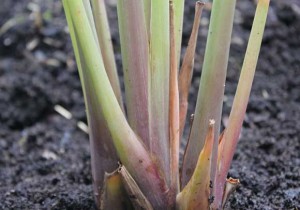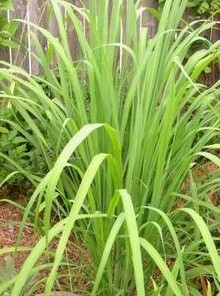Growing Lemongrass
Mmmmm… lemongrass …. I love the sweet, pungent, tangy citrus fragrance of lemongrass. It is used in many Asian cuisines but is most often associated with Thai and Vietnamese food. Lemongrass is usually used as a herb but also makes a great tea. Growing lemongrass is extremely easy even for gardening novices . Lemongrass was originally a native of India and Sri Lanka but is now grown in most of Asia. Growing lemongrass can easily be done throughout New Zealand. A single plant will grow for several years but needs to be taken indoors during frosty months. Lemongrass grows easily in the warmer parts of the country. The plant doesn’t win any awards for beauty – it looks like a waist high patch of grass.
At the base of the plant there is a plump stalk similar to a spring onion. This bulb is used for cooking purposes.
Growing Conditions
Plant from October to March. Warm and humid conditions with plenty of moisture and slightly acidic conditions are best for growing lemongrass. They fare best if grown in a container that can be brought indoors in winter so are perfect for growing in GreenSmart pots. I have had inconsistent results from growing seeds.It is easiest to get started by just rooting stalks or cuttings. Buy some regular firm, green lemongrass from the supermarket or grocer. Snip off three to four cm above the base and soak the base end in a glass of water in a sunny spot until roots appear after a couple of weeks. The plant will be ready to plant out in your GreenSmart pot when the roots are at least two cm long. Here is a video showing you how to do it.
Most garden centres sell 10 cm high plants that are ready to plant out.
I find that the mature plants use a surprising amount of water so keep an eye on the water level in the reservoir during mid-summer. They like plenty of sun –full sun is best– at least six hours per day.
Fertiliser
Use plenty of well rotted manure for growing lemongrass. The plants require plenty of nitrogen. Eg Yates Dynamic Lifter or sheep manure pellets. Feed with liquid fertiliser during summer months.
Pests and Diseases
The lemon-scented leaves are often used as natural insect repellent so you won’t have to worry about pest attacks when growing lemongrass. Some gardeners report that their cats like to chew the leaves!
Companions
Mint, lavender and sage are good companions for growing lemongrass. Try growing lettuces alongside the lemongrass to give your lettuces some dappled shade.
Harvesting
You can start using the leaves when they reach knee high. Use a sharp knife to slice off the stalk at ground level when the stalk is one cm thick. Peel off the outer casing and use the tender stem within.
In the Kitchen and other uses
Here are two great lemongrass recipes – one Thai and one Vietnamese. The firm, lower part of the lemongrass stem can be frozen for later use. Lemongrass tea: Pour boiling water over sliced leaves and let it steep for five minutes. The aroma is fantastic!!
For people who are into gardening and cocktails, try using lemongrass as a swizzle stick or click here about infusing vodka with lemongrass. Lemongrass oil is antiseptic, antibacterial and antiviral. It is also claimed to be a anti-depressant and good for inducing sleep. Lemongrass can also be used for settling upset stomachs.
Find out more about GreenSmart pots here:
http://growgoodnz.co.nz/our-products/
Happy gardening,
Bill.


